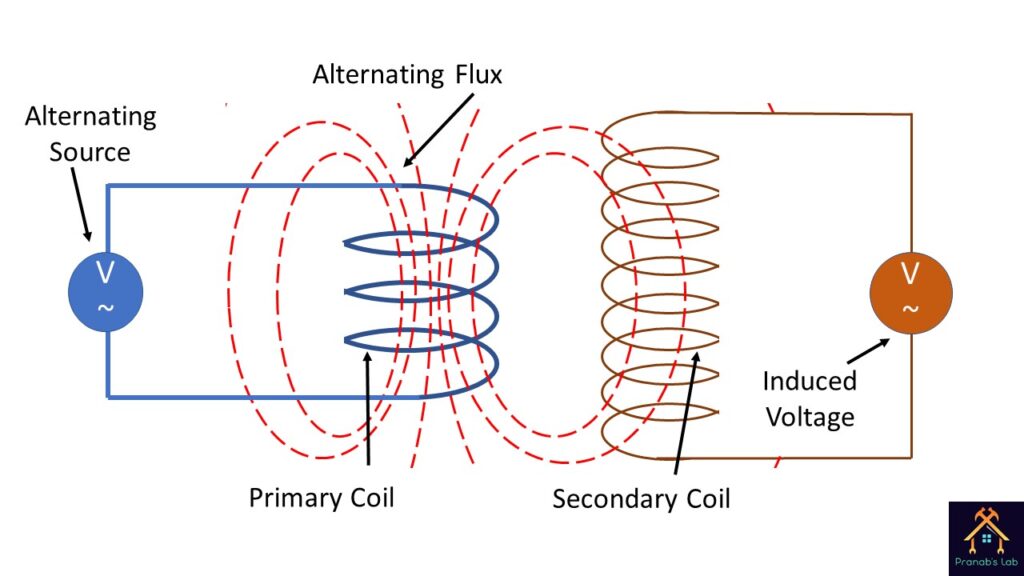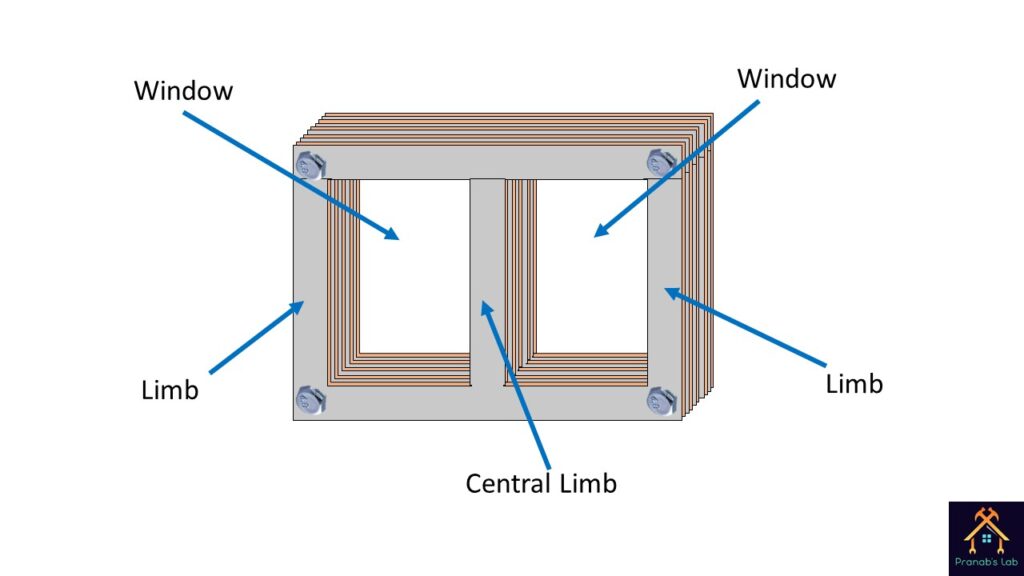Experiment No. : 3
Experiment Name :
Identification of Different Parts of a Single-Phase Transformer
Objective :
To identify different parts of a single phase Transformer.
Theory :
Transformer is a electrical device, which can transfer electric power from one circuit to another, without changing it’s frequency. Whenever the primary side of a transformer is connected with single phase supply, then, an alternating current starts flowing through the coil and an alternating flux also generated. Which links with the primary side and secondary side of the transformer and according to the Faraday’s law of Electromagnetic Induction, when a changing flux links with a coil, then an alternating voltage is induced in that coil. Thus the power is transferred from primary side to the secondary side of the transformer by mutual induction process.

Parts of a Single Phase Transformer :
Mainly there are two parts of it, (A) Transformer Core and (B) Transformer Winding.
(A) Transformer Core : The core is made of thin laminations of Silicon-steel sheet. To reduce hysteresis loss the core material made of Silicon-steel and to reduce eddy current loss the core is laminated. On the basis of design, there are two types of transformer, (i) core type and (ii) shell type. ‘L’ sections are used in core type transformer and ‘E’, ‘I’ sections are used to made shell type transformer. Shell type transformer is more preferable, cause there are two flux carrying path and less amount of air gap. The main function of the core is to carry flux and hold the windings.

(B) Transformer Winding : There are two winding are present in a single phase transformer, high voltage winding (HV) and low voltage (LV) winding. High voltage winding consist of more number of turns and low voltage winding consist of less number of turns. Insulation required for HV winding is more and less in case of LV winding. In a transformer the transferred power is same, so, the HV winding carry less amount of current, so the cross sectional area of the conductor winding is thin and the LV winding carry more amount of current, so the cross sectional area of the conductor winding is thicker. Practically, first of all, the LV winding is wound on the former core, on the LV winding the HV winding is placed.

Diagram :

Apparatus Used :

Remarks :
The core of the transformer is heavy, so we have to handle it with care.

I read this article completely on the topic
of the resemblance of most up-to-date and preceding technologies, it’s awesome article.